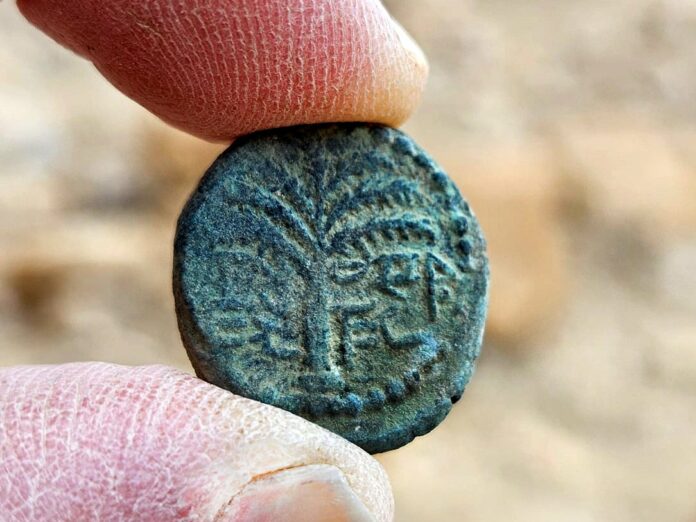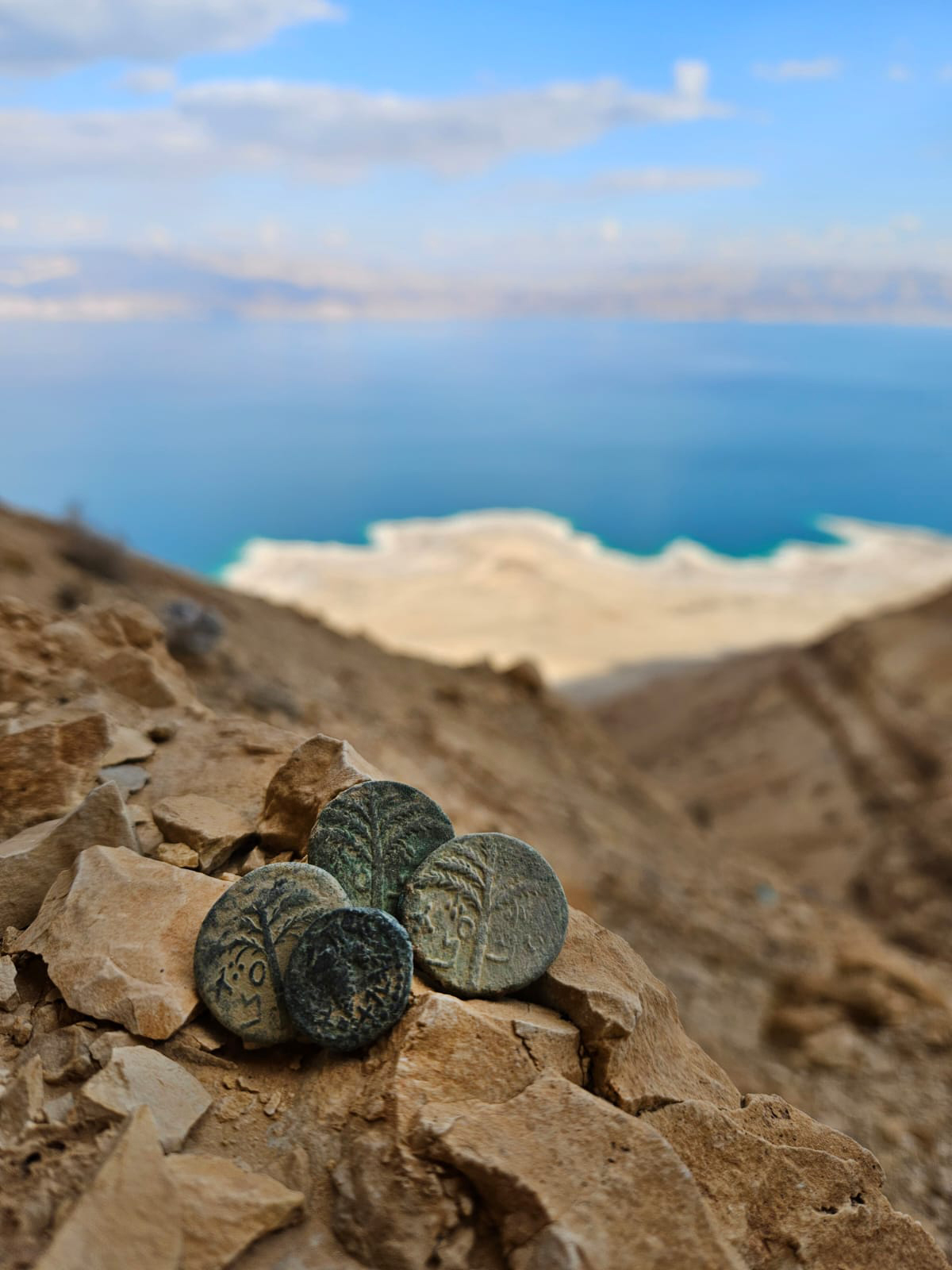JERUSALEM (VINnews) — A rare coin from the time of the Bar Kochba revolt, bearing the name “Elazer the Priest,” has been discovered at the foot of a cliff in the Judean Desert by Israeli archaeologists, according to a report by Haaretz.
Join our WhatsApp groupSubscribe to our Daily Roundup Email
The coin bears the date of 132 C.E., corresponding to the first year of the Bar Kochba revolt. It apparently rolled out of a cave in the cliff face where Jewish rebels had hidden from the furious Romans during the rebellion, says Dr. Eitan Klein, deputy head of the Israel Antiquities Authority’s anti-theft division, which is trying to beat the legions of looters to ancient treasures in the region.
Revealed by the antiquities authority on Monday, the coin was actually found about two weeks ago – around 20 years after the cave had been excavated, Klein says.
With it, the archaeologists also found three other coins dating to the revolt, featuring the name “Simon” – referring to Bar Kochba himself, according to general consensus.
Coins from Bar Kokhba rebellion discovered
The cave is located on a long line of cliffs on the western side of the Dead Sea. When it was previously excavated, archaeologists discovered various items in that cave, Klein says. These included a Roman javelin, which the Jewish rebels had presumably stolen or otherwise obtained from a Roman soldier and stashed in the cave for future use..
The coins at the base of the cliff remained undiscovered until now, however. They were found in the course of the IAA’s meticulous, painstaking and sweeping survey of the Judean Desert, by the inspectors of the Prevention of Archaeological Theft Unit. The unit aims to thwart attempts by thieves to ransack the desert for its ancient treasures.
The survey began in 2017 and its importance could be showcased by the following: the coin bearing Elazer’s name is extremely rare in archaeological excavations. It is less so on the black market, says Klein. Evidently, more looters are finding them than archaeologists.
Who might Elazer the Priest have been? “The common assumption in research is that it was Rabbi Elazar haModa’i , a disciple of the famed Yohanan ben Zakkai,” Klein explains.
That tentative identification is based on legends of Judea’s destruction in the Mishna and Talmud, which report that haModa’i was a cousin of Shimon Bar Kochba. “Elazar lived in Beitar, the capital of the rebellion, of the Bar Kochba state. They say that as long as he would pray, Beitar couldn’t be conquered. When he stopped, Beitar was conquered. This legend shows haModai’s importance,” he says.
At least in the first year. HaModa’i’s name only appears on coins from that year, but the rebellion lasted four years. “Obviously he was one of the religious leaders at the start of the rebellion. What happened to him?” Klein asks rhetorically. “We don’t know.”
The Jerusalem Talmud (Taanis 4:5) relates that a Cuthean entered Beitar and spoke with Rabbi Elazar Hamodai. This aroused the wrath of Bar Kokhba, who suspected Rabbi Elazar of treason. Despite his denials, Bar Kochba kicked Rabbi Elazar and he later died as a result.
Elazar Hakohen’s name is inscribed on the coin in ancient Hebrew script, which had long since fallen out of use by the time of Bar Kochba. This anachronism was intentional, Klein explains. The Bar Kochba rebels deliberately engraved their coins with ancient Hebrew script from the time of the First Temple, as a show of connection to their roots.
“They deliberately used an ancient Hebrew script used at the time of the First Temple, to show the continuity of the Jewish people and of the kingdom of the Jews: the connection between Bar Kochba and the kingdom of David and Solomon,” Klein says.
On the same side of the coin as the inscription “Eleazar the Priest,” we see a date palm. This is symbolic of the Kingdom of Judah, the Roman province of Judea, Klein explains, though dates have been cultivated throughout the Middle East since ancient times.
“First of all, there were a lot of date palms there,” he says, meaning by the Dead Sea area. It was indeed famed for its dates in antiquity. In 2021, scientists even resurrected the extinct local variant of the date palm, growing trees from seeds around 2,000 years old (with hundreds of years margin in either direction). The date characterizes the area and symbolizes ts good attributes: loftiness, shade, fruit.
The other side of the coin, featuring a cluster of grapes and the optimistic inscription “Year 1 of the redemption of Israel.”



Do these coins belong to the Palestinian terrorists?
Wow! Nice. But it is authenticated by Mishna and Talmud, so why call it a legend?
Fossilized coin rolling out from rock? Last time I heard of anything that big in rock it was the rolling stones.